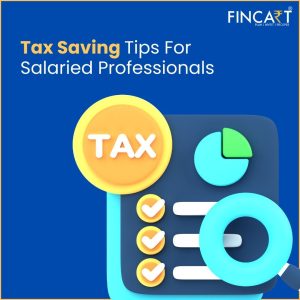Table of Contents
ToggleAfter years of hard work, one dreams of a peaceful and comfortable life in their twilight years. But to realise this dream, one must have financial foresight. The Government of India launched the National Pension System to address precisely this need. Regulated by the Pension Fund Regulatory and Development Authority, NPS allows individuals to contribute regularly towards their pension fund, which is managed by professional fund managers.
They invest in different market instruments such as equity, corporate debt, and government debt to generate market-linked returns over time. After retirement, 60% of the total accumulated amount can be withdrawn, while the remaining 40% must be used to buy an annuity.
There are many advantages of NPS. One can invest in NPS through SIPs and regularly contribute to building a retirement corpus, it allows investors the flexibility to customise their investment strategy according to their risk tolerance and investment preferences, and it is a great way to reduce your tax liabilities. In this blog, we’ll focus on the tax-related NPS benefits.
Understanding the Tax Benefits Under NPS
NPS falls under the Exempt Exempt Exempt (EEE) category, meaning taxes on contributions, interest, and withdrawals are exempt. Under Section 80CCD(1) of the Income Tax Act, one can get a tax deduction of up to Rs. 1.5 lakh in a financial year. by investing in NPS. Under Section 80 CCD (1B), one can claim an extra deduction of Rs. 50,000 in a financial year, so total benefits up to Rs. 2 lakh can be claimed.
Tax Benefits for Employees and Self-Employed Individuals
1. NPS for Salaried Employees
Since the National Pension System is voluntary, a salaried investor can contribute to their NPS account which is eligible for tax deductions under Section 80CCD. The employer includes this part in the overall salary package. A tax deduction of up to 10% of the individual’s salary (including basic salary + Dearness Allowance) can be claimed. For government employees, this limit goes up to 14% under Section 80 CCD (2). This is in addition to the Rs. 1.5 lakh limit provided under Section 80CCE. Making these contributions reduces your taxable income and thus leads to lower tax liabilities.
2. NPS for Self-Employed Individuals
Tax benefits for self-employed investors contributing to their NPS account are given under Section 80CCD(1) of the Income Tax Act. If you are self-employed and contributing to the National Pension System, you can claim a tax deduction of up to 20% of your gross income under section 80 CCD (1). This is within the limit of Rs. 1.5 lakh provided in Section 80CCE. On top of that, a tax deduction up to Rs. 50,000 can be claimed under section 80 CCD(1B).
Comparing NPS with Other Tax-saving Instruments
Let’s see how NPS compares with other tax-saving retirement instruments – Employee Provident Fund, and Public Provident Fund.
1. NPS vs. EPF (Employee Provident Fund)
First, let us briefly understand the Employee Provident Fund. EPF is also a government backed retirement benefits scheme where both the employer as well as the employee contribute 12% of the employee’s salary (basic salary and dearness allowance) each month. Over the years, this fund has accumulated interest. EPF is regulated by the Employees’ Provident Fund Organisation (EPFO) under the Government of India. Like NPS, EPF also falls under the EEE category. Here is how EPF is different from NPS:
- Under Section 80C of the Income Tax Act, one can get a tax deduction of up to Rs 1.5 lakh by investing in EPF, while NPS offers an extra deduction of Rs. 50,000 under Section 80CCD (2) in addition to the standard Rs. 1.5 lakh deduction under Section 80CCD(1).
- The rate of interest for EPF is calculated by the EPFO each fiscal year. On the other hand, the National Pension System offers market-linked returns to investors.
- Any citizen of India over the age of 18 can invest in NPS, it doesn’t matter if one is salaried or self-employed. Investing in EPF however, is open only to salaried employees.
- Every salaried individual earning over Rs. 15,000 per month is required to have an EPF account. In contrast, NPS is a voluntary scheme.
2. NPS vs. PPF (Public Provident Fund)
The Public Provident Fund is another government-backed scheme. It has a maturity period of 15 years, which makes it a suitable investment option for long-term financial goals such as retirement. The rate of interest is determined by the Government of India each quarter. Here’s how it differs from NPS:
- One can get a tax exemption up to Rs. 1.5 lakh under section 80C of the Income Tax Act by investing in PPF, whereas an extra deduction of up to Rs. 50,000 under section 80CCD(1B) can be claimed on top of the usual Rs. 1.5 lakh limit by investing in the National Pension System.
- Since PPF is a risk-free investment, the returns are lower compared to the NPS, which has market-linked returns. This also makes NPS a comparatively risky investment.
- One cannot control where their PPF amount gets invested, whereas NPS investors have the freedom to choose the investment portfolio.
Also Read: Differences Between PPF and NPS: Which is Better Options?
Tips for Maximizing Tax Benefits with NPS
1. Optimal Contribution Strategy
When you are calculating the NPS contribution amount, you must keep your current financial situation and financial goals in mind. It shouldn’t be your goal to get the maximum deduction amount, but the maximum deduction amount that aligns with your financial goals and overall investment strategy. Diversify your portfolio and strike a balance between NPS contributions and other investments like mutual funds and stocks.
2. Understanding Tier I and Tier II Accounts
There are two accounts under NPS – Tier I and Tier II. Tier I is the default account, which means when you open an NPS account, Tier I is automatically created. On the other hand, a Tier II NPS account is voluntary, and can only be opened after the Tier I account. It acts like a mutual fund and can be withdrawn at any time, unlike a Tier I account locked in until the retirement age of 60. Tier II accounts do not provide any tax benefits, so any amount you withdraw is added to your total income and taxed as per your slab.
Simply, the purpose of a Tier I account is to be used as a retirement savings plan, whereas one can think of Tier II accounts as a regular investment plan.
Also Read: 10 Reasons why you should choose Corporate NPS for your retirement planning
Conclusion
Not only is the National Pension System a good instrument for retirement planning, but its tax benefits make it even more appealing for investors looking to make their long-term investment strategies more tax-efficient. Its market-linked returns along with the extra Rs. 50,000 deduction it provides under Section 80 CCD (1B) of the Income Tax Act set it apart from other tax-saving instruments such as the Employee Provident Fund and the Public Provident Fund. So if you are thinking about your retirement, why not add NPS to your investment plan? It can bring you tax savings, long-term security, and peace of mind!




